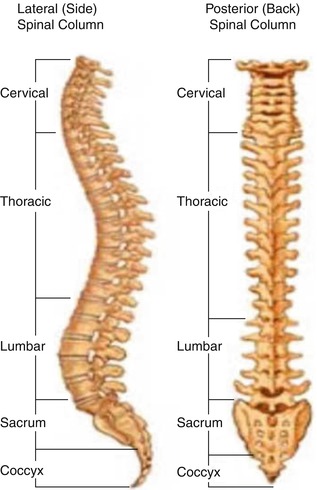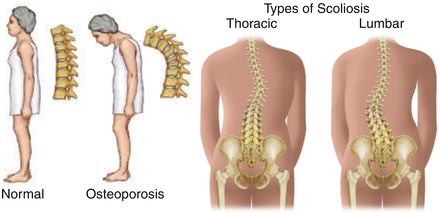In the erect spine with the person standing the spine has a specific alignment. From the front, the coronal plane, the skull and spine should be straight. From the side, sagittal plane, the spine has three main curves, with the shape of two “S’s”. The top S curve in the cervical spine is lordotic. The thoracic spine and sacrum are lordotic. The lumbar spine is kyphotic. With normal posture and alignment the curves should balance each other out such that the head is in alignment with the pelvis, “normal sagittal” alignment exists. Spinal alignment is important for humans for walking and standing. Efficient use of energy in walking depends on good spinal alignment. In addition, when there is normal alignment there is usually no pain with upright posture and the muscles around the spine are less likely to fatigue. When the head is aligned over the pelvis no extra energy is needed in walking and the spine is considered “balanced”.


When there is malalignment of the spine often this may reflect problems. Acute change in alignment most often results from trauma. Traumatic injuries can cause minor injury to the muscle and soft tissue around the spine and may cause mild changes in alignment. Most of these minor changes in alignment can be managed conservatively with medication for pain or muscle spasms, application of heat/cold, physical therapy and other modalities. Moderate or severe injuries to the spine may cause injuries to the ligaments which connect to the vertebra to each other or fractures of the bony elements of the spine. The injury may cause a direct injury to the spinal cord or nerve roots resulting in neurological deficits. If there is a change in alignment that creates instability of the spine, either an external brace or surgery is needed to stabilize the spine.







